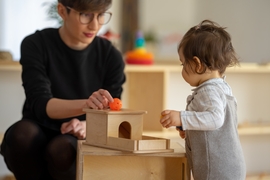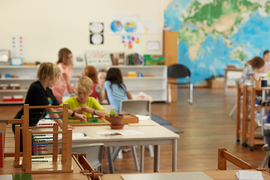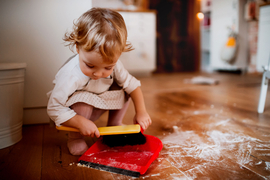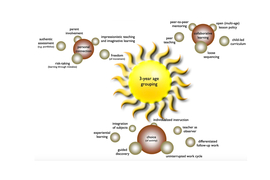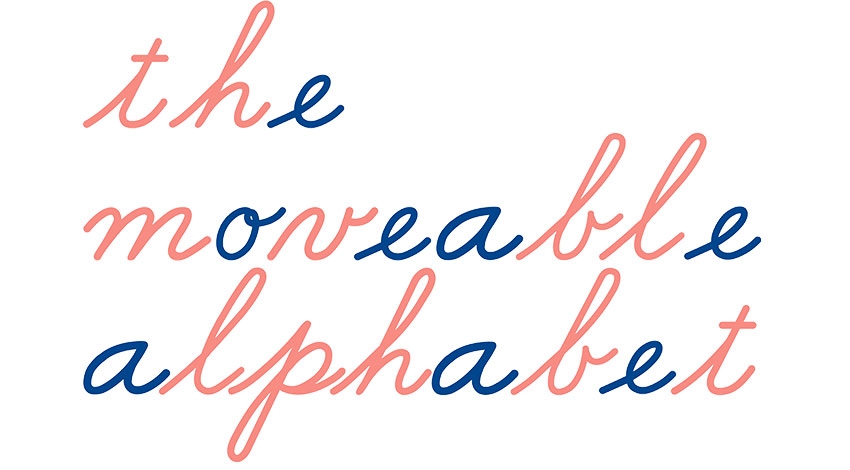
“Written language complements spoken language and is integrated with it.” (Maria Montessori, The Formation of Man)
Montessori said that writing is a complex action requiring certain abilities that can be categorised into two main groups: physical ability (the use of the hand) and cognitive ability (the use of the mind).
The child needs to be able to hold a writing instrument appropriately in order to write successfully. The child also needs to have lightness of touch, appropriate control and judgment to adapt the movements of the hand to the space available (for example, to be able to write on lines) and the control of movement to effectively trace and form the shape of the letters.
“The hand which writes needs to co-ordinate certain actions which can be analysed.... These different movements can be prepared one by one by means of different exercises.” (Maria Montessori, The Formation of Man).
The child also needs to develop and practice cognitive skills. This includes understanding that language is made up of words and words are made up of different sounds. In order to write, the child must be able to isolate, hear and identify the sounds that make up words. The child also needs to be able to find and place the letters that symbolise these sounds. These sounds, and eventually words, need to be arranged in a logical order to convey an idea. The child working with the moveable alphabet is experiencing how to express ideas clearly and logically using symbols (the letters of the alphabet).
“And now when everything is ready, the hand can write effectively. If the mind has already gone through all the exercises on wordbuilding, then writing can ‘explode’ all of a sudden; and immediately complete words even whole sentences, are written as if by magic.” (Maria Montessori, The Formation of Man)
The moveable alphabet is a box of individual letters that have been cut out so the child can ‘move’ them around to make up words. Typically the consonants are pink or red and the vowels are blue.
Generally, the child should know at least 8 to 10 sounds and their matching symbols (letters) before starting this exercise: this includes a mixture of consonants and vowels.
The child familiarises him or herself with the materials by finding the known letters, taking them out of the box and then working out where to put them back in. The adult then says a word which incorporates the known sounds and models how to sound and identify each letter in turn and place them from left to right to make a word. After modelling a couple and inviting the child to say, identify and find the symbols which match the sounds, the child is encouraged to continue to think of words they would like to make and to continue in the same way.
The child is shown more sandpaper letters while they are working with the moveable alphabet and is also inspired, encouraged and supported to gradually increase the complexity of their words. This can be done by suggesting longer words or words containing more sounds as well as encouraging the child to think of related words or adjectives that further describe their first word. For example, if the child ‘writes’ (putting down the letters) the word cat, they can be encouraged to think up other words relating to cats (milk, soft, black, purr and so on).
It is important to free the child’s self expression by encouraging the child to think up their own words and ideas they would like to write rather than restricting the child by always suggesting or giving them words to make verbally or in the form of a box of objects.
It is important to remember that the moveable alphabet work is primarily to develop creative expression within the child and is not an exercise in teaching correct spelling.
The moveable alphabet is a wonderful piece of material that allows the child of around three and a half years and up to be able to experience another way of expressing themselves; this time through the written word.
